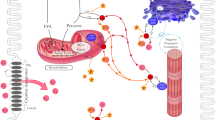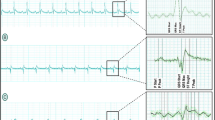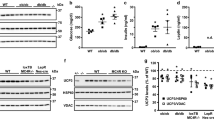Abstract
While carnitine overload appears to have therapeutic effects in pathological situations such as heart recovery after ischemia, its benefits as dietary supplementation for aerobic exercise have been questioned. We studied the effect of carnitine supplementation on the response of perfused rat heart to ischemia and reperfusion. Supplementation of the perfusion medium with 1mM carnitine had no effect on cardiac performance in normoxic hearts, although it lowered lactate production by nearly 80%. Carnitine did not affect the amount of lactate accumulated during 30 min of ischemia, which was recovered in the perfusate immediately after reperfusion. However, carnitine worsened tissue injury, as shown by the 70% increase in creatine kinase release. Carnitine also worsened the recovery of contractile function, as revealed by the slower increase in heart rate and contractile force. In addition, carnitine supplementation increased contracture of the heart shortly after reperfusion. Therefore, in conditions where it does not increase glucose oxidation, carnitine supplementation worsens both injury and recovery of contractile function after transient ischemia in perfused rat heart.
Resumen
Mientras que una sobrecarga de carnitina parece tener efectos terapéuticos en situaciones patológicas como la recuperación del corazón tras una isquemia, los beneficios como suplemento dietético en el ejercicio aeróbico se han cuestionado. Se estudia en el presente trabajo el efecto de un suplemento de carnitina sobre la respuesta del corazón perfundido de rata a la isquemia y reperfusión. El suplemento del medio de perfusión con carnitina 1 mM no produjo ningún efecto en los parámetros funcionales del corazón normóxico, a pesar de que redujo la producción de lactato en un 80%. La carnitina no alteró la cantidad de lactato acumulado durante los 30 min de isquemia, lactato que fue recuperado en el perfundido immediatamente después de la reperfusión. Sin embargo, la carnitina empeoró las lesiones tisulares como indicó el incremento en un 70% de la creatina quinasa liberada. La carnitina también empeoró la recuperación de la función contráctil. Así lo indicó la recuperación más lenta de la frecuencia cardíaca y de la fuerza de contracción. Además, la carnitina aumentó la contractura que aparecía en el corazón inmediatamente después de la reperfusión. Por lo tanto, en condiciones en la que no se produce un incremento de la oxidación de glucosa, el suplemento de carnitina empeora las lesiones y la recuperación de la función contráctil después de una isquemia transitoria en el corazón perfundido de rata.
Similar content being viewed by others
References
Alvarez de Sotomayor, M., Mingorance, C., Rodríguez-Rodríguez, R., Marhuenda, E., and Herrera, M.D. (2007): L-Carnitine and its propionate: improvement of endothelial function in SHR through superoxide dismutase-dependent mechanisms. Free Radical Res, 41, 884–891.
Apstein, C.S. (2000): Increased glycolytic substrate protection improves ischemic cardiac dysfunction and reduces injury. Am Heart J, 139, S107-S114.
Barnett, C., Costill, D.L., Vukovich, M.D., Cole, K.J., Goodpaster, B.H., Trappe, S.W., and Fink, W.J. (1994): Effect of L-carnitine supplementation on muscle and blood carnitine content and lactate accumulation during high-intensity sprint cycling. Int J Sport Nutr, 4, 280–288.
Brass, E.P. (2004): Carnitine and sports medicine: use or abuse?Ann NY Acad Sci, 1033, 67–78.
Broderick, T.L., Quinney, H.A., Barker, C.C., and Lopaschuk, G.D. (1993): Beneficial effect of carnitine on mechanical recovery of rat hearts reperfused after a transient period of global ischemia is accompanied by a stimulation of glucose oxidation. Circulation, 87, 972–981.
Broderick, T.L., Quinney, H.A., and Lopaschuk, G. D. (1992): Carnitine Stimulation of Glucose Oxidation in the Fatty Acid Perfused Isolated Working Rat HeartJ Biol Chem, 267, 3758–3763.
Calo, L.A., Pagnin, E., Davis, P.A., Semplicini, A., Nicolai, R., Calvani, M., and Pessina, A.C. (2006): Antioxidant effect of L-carnitine and its short chain esters — Relevance for the protection from oxidative stress related cardiovascular damage. Int J Cardiol, 107, 54–60.
Ferrari, R., Merli, E., Cicchitelli, G., Mele, D., Fucili, A., and Ceconi, C. (2004): Therapeutic effects of L-carnitine and propionyl-L-carnitine on cardiovascular diseases: a review. Ann NY Acad Sci, 1033, 79–91.
Folts, J.D., Shug, A. L., Koke, J.R., and Bittar, N. (1978): Protection of the ischemic dog myocardium with carnitineAm J Cardiol, 41, 1209–1214.
Gómez-Amores, L., Mate, A., Revilla, E., Santa-María, C., and Vazquez, C. M. (2006): Antioxidant activity of propionyl-L-carnitine in liver and heart of spontaneously hypertensive rats. Life Sci, 78, 1945–1952.
Gorostiaga, E. M., Maurer, C.A., and Eclache, J.P. (1989): Decrease in respiratory quotient during exercise following L-carnitine supplementation. Int J Sports Med, 10, 169–174.
Gutmann, I. and Wahlefeld, A.W. (1974): L-(+)-lactate. Determination with lactate dehydrogenase and NAD. In Methods in Enzymatic Analysis. Vol. 3 (Bergmeyer, H. U., ed.), Academic Press, New York, pp. 1464–1468.
Jordan, J.E., Zhao, Z.Q., and Vinten-Johansen, J. (1999): The role of neutrophils in myocardial ischemia-reperfusion injury. Cardiovasc Res, 43, 860–878.
Liedtke, A.J. and Nellis, S.H. (1979): Effects of carnitine in ischemic and fatty acid supplemented swine hearts. J Clin Invest, 64, 440–447.
Liedtke, A.J., Nellis, S.H., and Whitesell, L.F. (1981): Effects of carnitine isomers on fatty acid metabolism in ischemic swine hearts. Circ Res, 48, 859–866.
Loster, H. and Bohm, U. (2001): L-carnitine reduces malondialdehyde concentrations in isolated rat hearts in dependence on perfusion conditions. Mol Cell Biochem, 217, 83–90.
Luptak, I, Yan, J., Cui, L., Jain, M., Liao, R., and and Tian, R. (2007): Long-term effects of increased glucose entry on mouse hearts during normal aging and ischemic stress. Circulation, 116, 901–909.
Opie, L.H. and Sack, M.N. (2002): Metabolic plasticity and the promotion of cardiac protection in ischemia and ischemic preconditioning. J Mol Cell Cardiol, 34, 1077–1089.
Piper, H.M., Abdallah, Y., and Schafer, C. (2004): The first minutes of reperfusion: a window of opportunity for cardioprotection. Cardiovasc Res, 61, 365–371.
Piper, H.M. and Garcia-Dorado, D. (1999): Prime causes of rapid cardiomyocyte death during reperfusion. Ann Thorac Surg, 68, 1913–1919.
Randle, P. J., Garland, P.B., Hales, C. N., and Newsholme, E.A. (1963): The glucose fatty-acid cycle. Its role in insulin sensitivity and the metabolic disturbances of diabetes mellitus. Lancet, 1, 785–789.
Rebouche, C.J. (2004): Kinetics, pharmacokinetics, and regulation of L-carnitine and acetyl-L-carnitine metabolism. Ann NY Acad Sci, 1033, 30–41.
Rebouche, C.J. and Seim, H. (1998): Carnitine metabolism and its regulation in microorganisms and mammals. Annu Rev Nutr, 18, 39–61.
Rosalki, S.B. (1967); An improved procedure for serum creatine phosphokinase determination. J Lab Clin Med, 69, 696–705.
Siliprandi, N., Di Lisa, F., Pieralisi, G., Ripari, P., Maccari, F., Menabo, R., Giamberardino, M.A., and Vecchiet, L. (1990): Metabolic changes induced by maximal exercise in human subjects following L-carnitine administration. Biochim Biophys Acta, 1034, 17–21.
Soop, M., Bjorkman, O., Cederblad, G., Hagenfeldt, L., and Wahren, J. (1988): Influence of carnitine supplementation on muscle substrate and carnitine metabolism during exercise. J Appl. Physiol. 64, 2394–2399.
Author information
Authors and Affiliations
Corresponding author
Rights and permissions
About this article
Cite this article
Díaz, R., Lorita, J., Soley, M. et al. Carnitine worsens both injury and recovery of contractile function after transient ischemia in perfused rat heart. J Physiol Biochem 64, 1–8 (2008). https://doi.org/10.1007/BF03168229
Received:
Issue Date:
DOI: https://doi.org/10.1007/BF03168229




